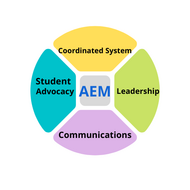
(View Complete Item Description)
On November 17, 2004, a bipartisan House-Senate conference committee approved a final special education reform bill that reauthorized the Individuals with Disabilities Education Act (IDEA) and set in motion important reforms that helped teachers, parents, and schools ensure every student with disabilities receives a quality education. The bipartisan agreement is based on legislation authored by House Education Reform Subcommittee Chairman Mike Castle (R-DE) that passed the House in 2003 with bipartisan support. The measure includes reforms recommended in 2002 by President Bush's special education commission, as well as key elements of the IDEA reauthorization bill passed by the Senate in 2004. On December 3, 2004, the President signed IDEA 2004 and stated:
"All students in America can learn. That's what all of us up here believe. All of us understand we have an obligation to make sure no child is left behind in America. So I'm honored to sign the Individuals with Disabilities Education Improvement Act of 2004, and once again thank the members for being here."
Material Type:
Primary Source
Author:
Nactional Center on Accessible Educational Materials




















